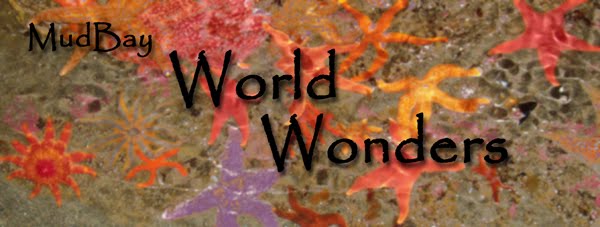Photo by Jeffrey Jeffords, copyrighted 2002
Photo by Jeffrey Jeffords, copyrighted 2002
Sea Dragon Facts (from National Geographic's website)
"Sea dragons are some of the most ornately camouflaged creatures on the planet. Adorned with gossamer, leaf-shaped appendages over their entire bodies, they are perfectly outfitted to blend in with the seaweed and kelp formations they live amongst.
"Endemic to the waters off south and east Australia, leafy and weedy sea dragons are closely related to seahorses and pipefish. Leafies are generally brown to yellow in body color with spectacular olive-tinted appendages. Weedies have less flamboyant projections and are usually reddish in color with yellow spots. Sea dragons have very long, thin snouts; slender trunks covered in bony rings; and thin tails which, unlike their seahorse cousins, cannot be used for gripping. They have small, transparent dorsal and pectoral fins that propel and steer them awkwardly through the water, but they seem quite content to tumble and drift in the current like seaweed. Leafies grow to a length of about 14 inches (35 centimeters), while the slightly larger weedies can grow up to 18 inches (46 centimeters) long.
For a video of these amazing creatures, click here.









Amazing creatures, they just leave me speechless.
ReplyDeleteI have seen these gallant creatures before ... they truly are mystic poetry gliding through the deep ocean. They remind me of a fairytale, where one would encounter mermaids, sunken treasures, and "sea dragons".
ReplyDeleteWhat wonderful photos--I've always loved these dragons of the sea.
ReplyDelete